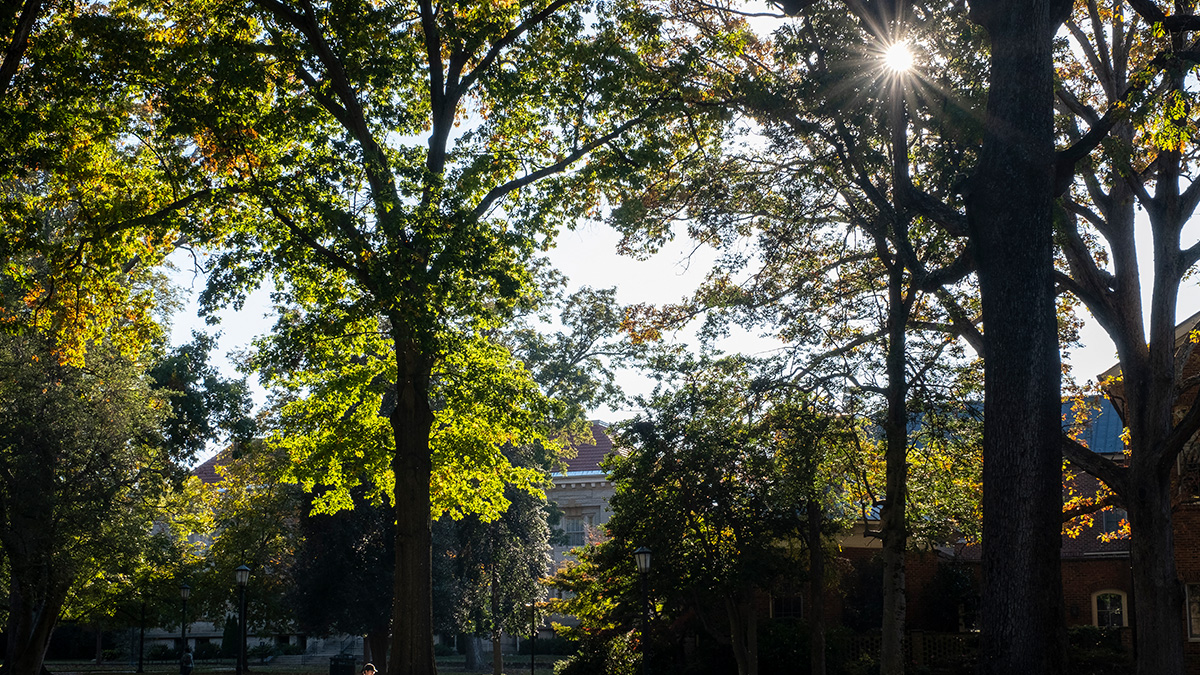Collaboration, innovation at Board of Trustees
Two elements of Carolina, the joint Department of Biomedical Engineering (BME) at Carolina and N.C. State and the Office of Commercialization and Economic Development, combine to shape the transformation of higher education and showcase how the University changes the lives of people in the state, across the country and around the globe.
Before you can reach the world, it is sometimes necessary to build a bridge.
Two of those bridges – and the people they have connected and work they have joined – were the focus at the University Board of Trustees meeting Oct. 1.
One of the bridges was the joint Department of Biomedical Engineering (BME) at Carolina and N.C. State that Nancy Allbritton, Kenan Distinguished Professor of Chemistry in UNC-Chapel Hill’s College of Arts and Sciences, has chaired since 2009.
The second bridge was the one that Judith Cone, interim vice chancellor for commercialization and economic development, began building six years ago when she came to campus to close the cultural divide separating pure research from commerce.
Chancellor Carol L. Folt said both will play a major part in Carolina’s still unfolding story improving lives across the state, nation and world.
“What we’re looking at is the transformation of higher education,’’ Folt said. “We have this new direction, which is taking what people learn and putting it directly into practice. That is new, that is exciting, and that is part of the future.”
‘Boom, boom, boom’
Created in 2003 as a collaboration of Carolina’s College of Arts and Sciences and School of Medicine and N.C. State’s College of Engineering, the Joint Department of Biomedical Engineering applies the methods of physics, chemistry, mathematics and engineering to solve knotty problems in health and medicine.
More recently, it solved one of its own problems fairly quickly. In just a year, Allbritton said, it established a joint undergraduate degree issued with the seal of both universities.
“The undergraduate degree just went boom, boom, boom,” Allbritton told the Board of Trustees.
Before, biomedical engineering students had to enroll in Carolina’s Applied Sciences department or NC State’s Biomedical Engineering department, but could not enroll in both. Hurdles to a joint degree included creating student ID cards that would allow full access at both universities and arranging for tuition paid at one university to give students the same privileges at the other.
Joining Allbritton were two students in the biomedical engineering program, John Larson of Carolina and Michaela Rikard of N.C. State, who work in different cardiac catheterization labs.
The presentation featured projects by other undergraduates, like Jeff Powell’s Helping Hands Project, which uses 3D printing technology to help create affordable prosthetic hands that are donated to children with disabilities. Other biomedical engineering work enables faster and more accurate disease diagnosis, permits non-invasive monitoring of the body for tumor growth and builds new body parts for the aging and impaired.
Allbritton said she has had no problem recruiting top students for the major. Even though the spaces available for undergraduates are triple what they were three years ago, snagging one of the 129 spots in the major remains extremely competitive.
“When the word got out about the joint degree – that we were going to get married – it went like wildfire,” Allbritton said.
“You make me so happy,” Folt told Allbritton at the end of her presentation. “Getting this done in a year is really fast.”
‘Ideas for a better world’
Cone said her mission, quite simply, is to make Carolina into a place where innovators thrive.
It is closer to being that place than ever before, she said. Last month, Reuters ranked Carolina the 15th most innovative among the world’s top 100 global universities.
Cone said the progress over the past decade was made possible by the sustained support from Folt and University trustees along with the “good will and hard work of a lot of people.”
With a special focus on urgent challenges, innovations launched at Carolina consistently apply important ideas for a better world, Cone said.
Cone said that society increasingly expects universities to solve pressing problems and drive the economy and Carolina, which ranks 8th nationally for federal research funding is well positioned to carry out that mandate.
Life science technologies remain the mainstay of Carolina’s commercial portfolio, Cone added, and its “intellectual property potential” in the future will remain centered in bio-medical companies with growth in applied science and bio-engineering.
Joining Cone for her presentation were Shawn Hingtgen, an assistant professor in the Eshelman School of Pharmacy who is developing stem cell drug carriers to treat brain cancer, and 2011 alumna Shruti Shah, who served as the president of former Chancellor Holden Thorp’s Student Innovation and in 2013 co-founded Move Loot, which created an easier way to buy and sell used furniture and now has more than 150 employees across the country, from San Francisco to New York City.
University trustee Julia Sprunt Grumbles said Shah went to the same small school in Memphis, Tennessee, and now, as an alumna of Carolina, is reaching back to mentor women undergraduates who are interested in following in her footsteps.
Carolina, Shah said, it the right place to dream. “I don’t think any of this would have been possible if not for my education at UNC,” Shah said.




